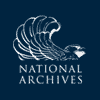General Orders, 7 August 1776
General Orders
Head Quarters, New York, August 7th 1776.
Parole: Essex.Countersign: Fairfield.
The Order of the 28th of July, respecting the removal of the sick from the Regimental to the General Hospital having been misunderstood by some;1 The General directs that it be taken with the following explanation. The regimental Surgeons are to send at any time, with the usual Ticket, any patient to the General Hospital whose case requires it (putrid, & infectious disorders always excepted)—Whenever the Director General, or any Surgeon of the Hospital, by his direction, visits the regimental Hospitals, they are to direct what patients are proper to be removed, but it is expected that when any Surgeon visits the regimental Surgeon, and if they should differ in opinion, they will refer it to the Director General,2 who has by the Resolutions of Congress, a superintendency over the whole. The General most earnestly recommends to the Gentlemen in both departments, to cultivate harmony and good agreement with each other, as conducive to their own Honor, and the good of the service.
A Sub: and twenty Men to be placed at Hoebuck Ferry, for examination of passengers.3 The officer to receive his Orders from the Adjutant General at Head Quarters.
The Pay Master having received a supply of Cash; The Colonels or commanding Officers of Regiments, are to apply for their June Pay; and make up Pay-Rolls for July, and deliver them to their respective Brigadiers for examination.4
As many Soldiers discharge their Peices, under pretence of Ignorance, of General Orders, and others having leave to do so from their officers, because they cannot draw the Charge: The General directs, that the Colonel of the Regiment, or commanding officer cause a daily inspection to be made of the state of the Arms; and when any are found loaded which cannot be drawn, they are to cause such men to assemble on the regimental parade, or some other convenient place, but at the same time, viz: Retreat Beating, and then discharge those peices. No alarm will then be given and the officers will see there is no unnecessary firing. It is the duty of the Colonel, and the reputation of his regiment so much depends upon the good order of the arms, that the General hopes he, as well as every other officer, and the men, will pay a special attention to it.
John Palsgrave Wyllys Esqr. is appointed Brigade Major to General Wadsworth5—Mark Hopkins Esqr. to Genl Fellows; they are to be obeyed and respected accordingly.
Varick transcript, DLC:GW.
2. reads: “Whenever the Director General or any Surgeons of the Hospital by his Direction Visit the Regimental Hospitals, he will consult the Regimental Surgeons & if they should differ in Opinion they will refer it to the Director” (208).
3. The Hoboken Ferry crossed the Hudson to New Jersey from a landing at Col. Leonard Lispenard’s house and brewery near the foot of present-day Laight Street. GW’s headquarters at the Mortier house was about a half a mile from this landing.
4. GW issued most of the warrants for June pay to regimental commanders on this date. Additional pay warrants were issued over the next few days (see warrant books nos. 1 and 2, DLC:GW).
5. John Palsgrave Wyllys (1754–1790), who had been adjutant of Col. Erastus Wolcott’s Connecticut state regiment since 1 Jan. 1776, served as brigade major of Gen. James Wadsworth’s brigade of Connecticut levies until he was taken prisoner on 15 Sept. during the American retreat from New York City. Wyllys was paroled in January 1777, and with GW’s assistance he was exchanged a few weeks later (see Jonathan Trumbull, Sr., to GW, 23 Jan. 1777, DLC:GW, GW to Trumbull, 1 Feb. and 3 Mar. 1777, Ct: Trumbull Papers, and GW to Joshua Loring, 1 Feb. 1777, DLC:GW). Soon after his exchange Wyllys became a captain in Col. Samuel Blachley Webb’s Additional Continental Regiment. He was promoted to major in October 1778 and remained in the Continental army until the end of the war, transferring to the 3d Connecticut Regiment on 1 Jan. 1781, the 1st Connecticut Regiment on 1 Jan. 1783, and Col. Heman Swift’s consolidated Connecticut regiment in June 1783. Wyllys resumed his military career in June 1785 when he joined the 1st American Regiment as a major. In September 1789 he was commissioned major of the 1st Infantry Regiment of the U.S. Army, and on 22 Oct. 1790 he was killed in an engagement with Indians on the Miami River.

![University of Virginia Press [link will open in a new window] University of Virginia Press](/lib/media/rotunda-white-on-blue.png)
